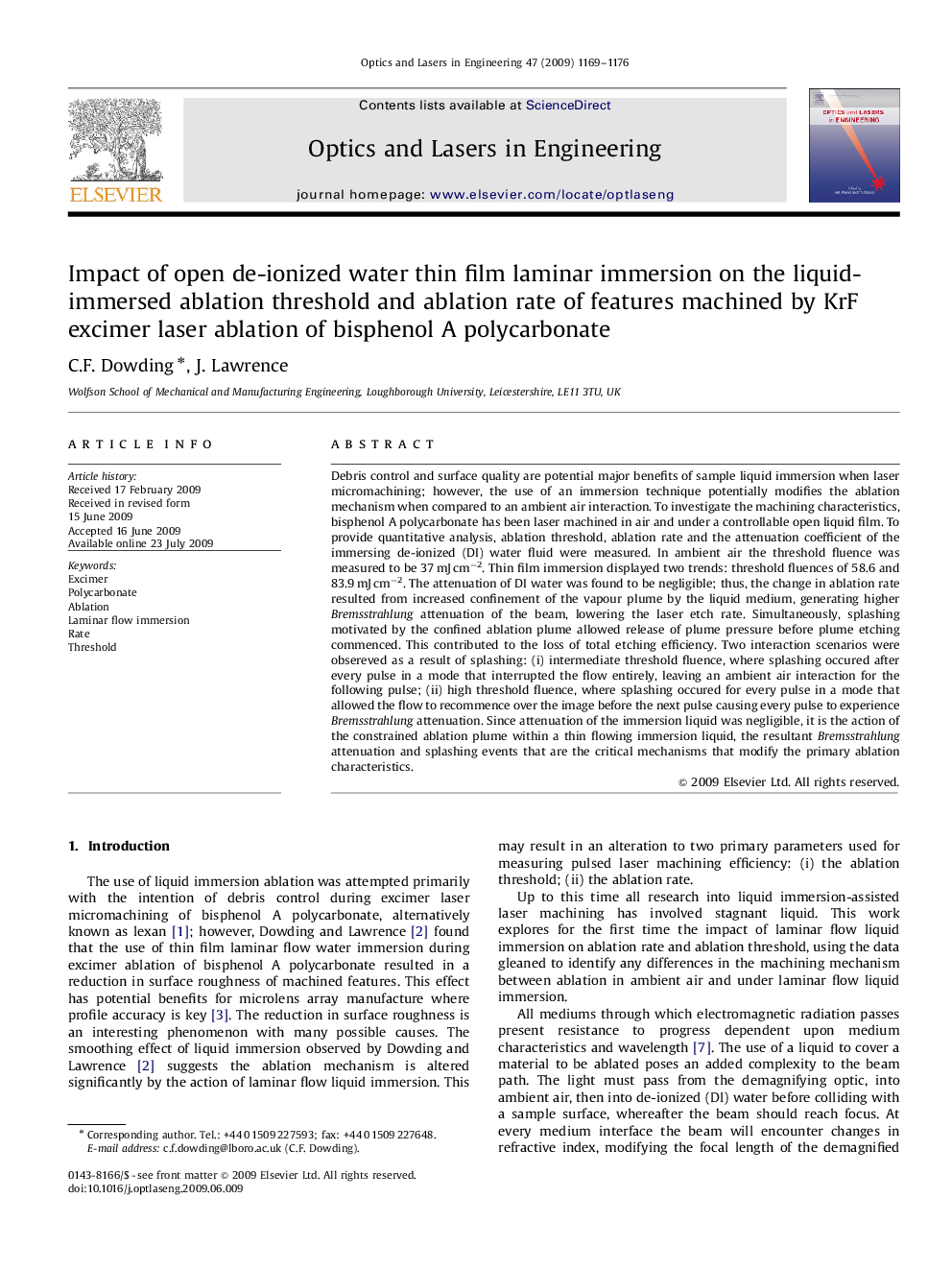| کد مقاله | کد نشریه | سال انتشار | مقاله انگلیسی | نسخه تمام متن |
|---|---|---|---|---|
| 746087 | 894442 | 2009 | 8 صفحه PDF | دانلود رایگان |

Debris control and surface quality are potential major benefits of sample liquid immersion when laser micromachining; however, the use of an immersion technique potentially modifies the ablation mechanism when compared to an ambient air interaction. To investigate the machining characteristics, bisphenol A polycarbonate has been laser machined in air and under a controllable open liquid film. To provide quantitative analysis, ablation threshold, ablation rate and the attenuation coefficient of the immersing de-ionized (DI) water fluid were measured. In ambient air the threshold fluence was measured to be 37 mJ cm−2. Thin film immersion displayed two trends: threshold fluences of 58.6 and 83.9 mJ cm−2. The attenuation of DI water was found to be negligible; thus, the change in ablation rate resulted from increased confinement of the vapour plume by the liquid medium, generating higher Bremsstrahlung attenuation of the beam, lowering the laser etch rate. Simultaneously, splashing motivated by the confined ablation plume allowed release of plume pressure before plume etching commenced. This contributed to the loss of total etching efficiency. Two interaction scenarios were obsereved as a result of splashing: (i) intermediate threshold fluence, where splashing occured after every pulse in a mode that interrupted the flow entirely, leaving an ambient air interaction for the following pulse; (ii) high threshold fluence, where splashing occured for every pulse in a mode that allowed the flow to recommence over the image before the next pulse causing every pulse to experience Bremsstrahlung attenuation. Since attenuation of the immersion liquid was negligible, it is the action of the constrained ablation plume within a thin flowing immersion liquid, the resultant Bremsstrahlung attenuation and splashing events that are the critical mechanisms that modify the primary ablation characteristics.
Journal: Optics and Lasers in Engineering - Volume 47, Issue 11, November 2009, Pages 1169–1176